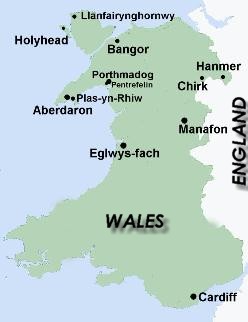
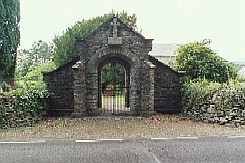
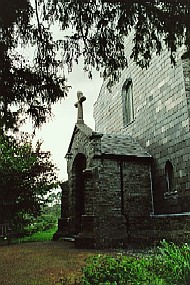

|

|

|
R.S.Thomas and his family left Manafon in October 1954 and set out westward. They settled in the parish of Eglwys-fach and he served at St. Michael's Church.

 St. Michael's Church, 2014, (Click to Enlarge)
St. Michael's Church, 2014, (Click to Enlarge)St. Michael's church, different from the Manafon church among the hills, stands along the main road, A487. The churchyard is much bigger and it also has a wider nave than the Manafon church. Soon after arriving there, R.S. began to refurbish its interior; the red altar cloth was sold and the pew was painted "matt black". A memorable tablet on a wall near the organ was removed. He also wanted to get rid of a stained glass above the altar but, at last, gave up. 1
The village stands some five miles from the sea. However, the major road, A487, which leads to Aberystwyth in the south and Machynlleth in the north, runs through it. The villagers were more sophisticated than the farmers in Manafon. They included retired people from English middle class who lived in big houses where some Welsh farmers got jobs as servants like a gardener. According to Elsie, R.S.'s wife, "It was a strange parish full of retired army people and retired tea-planters, a far cry from the farming community of Manafon. The army people were all arrogant, belligerent, wealthy and self-important -- and the others dull."2
Except the parishoners from English middle class the villagers spoke Welsh daily and R.S. had to give sermons in Welsh every Sunday. He felt happy but a little pressure to preach in Welsh in front of them.
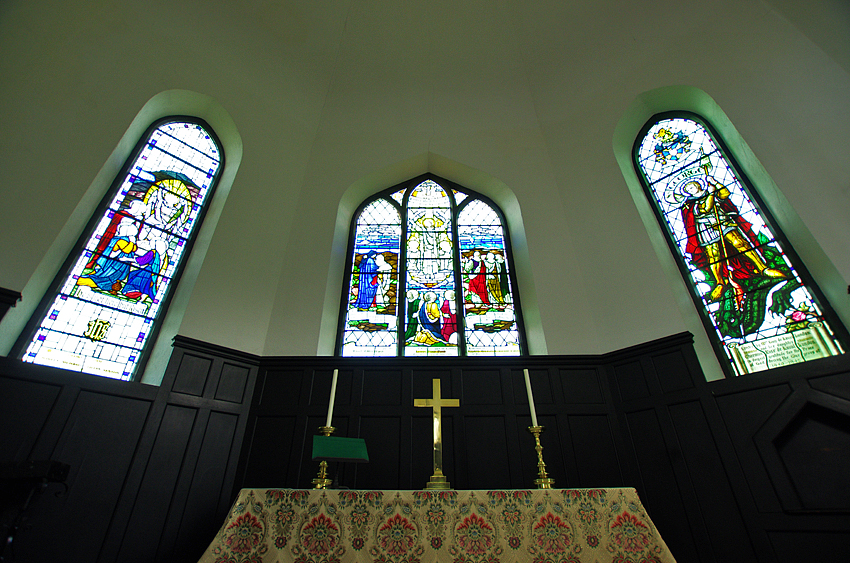 |
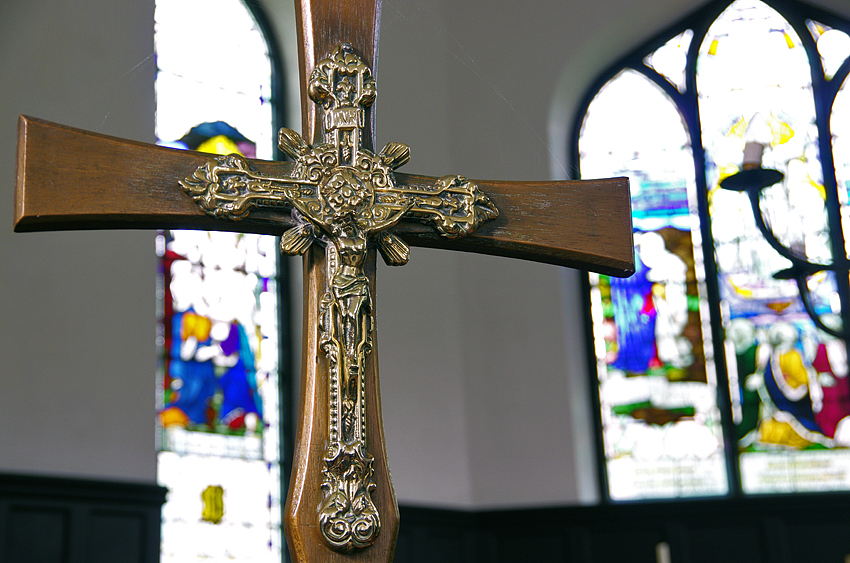 |
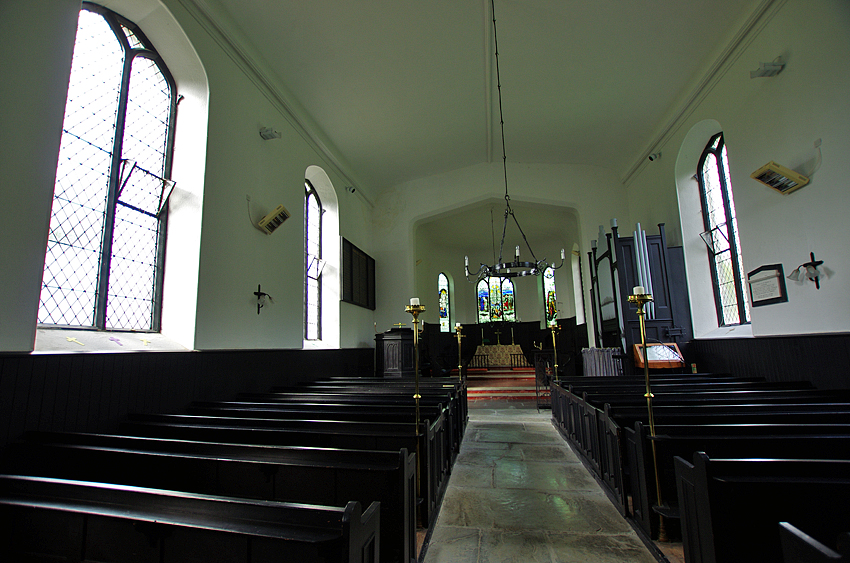 |
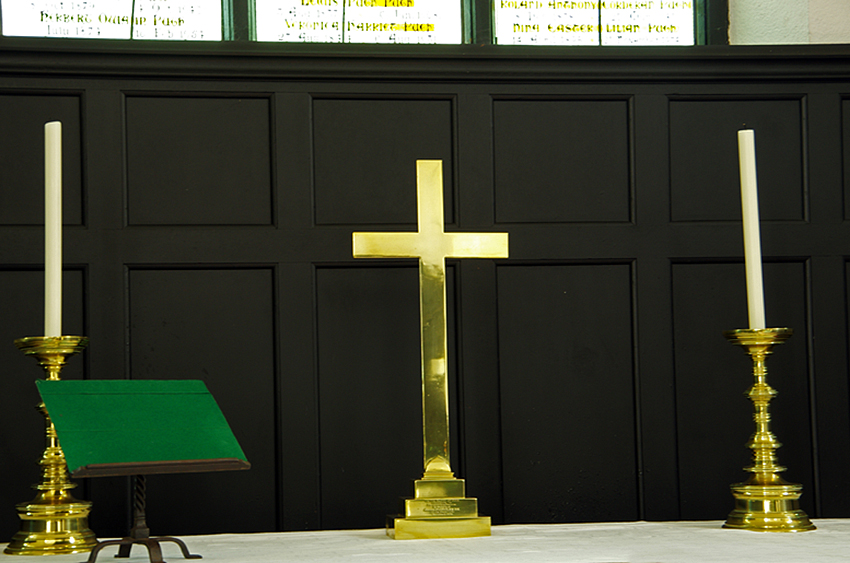 |
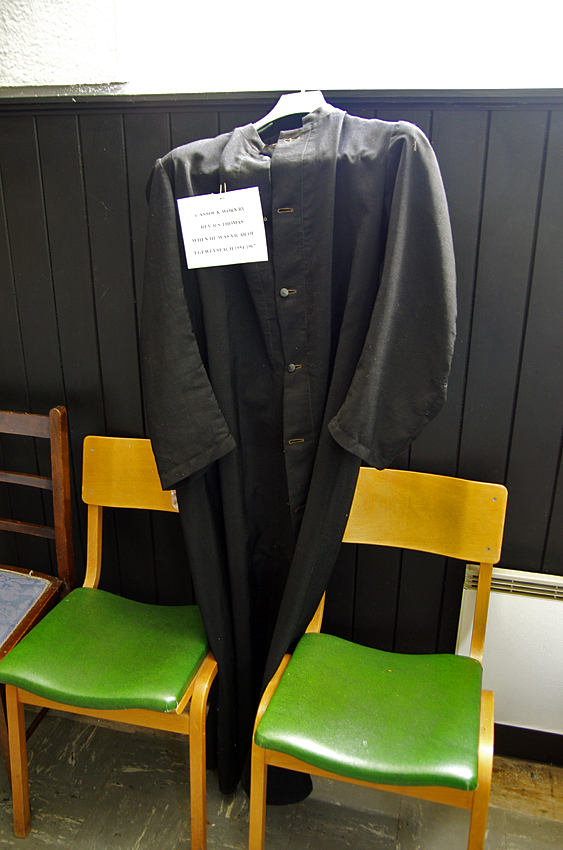 |
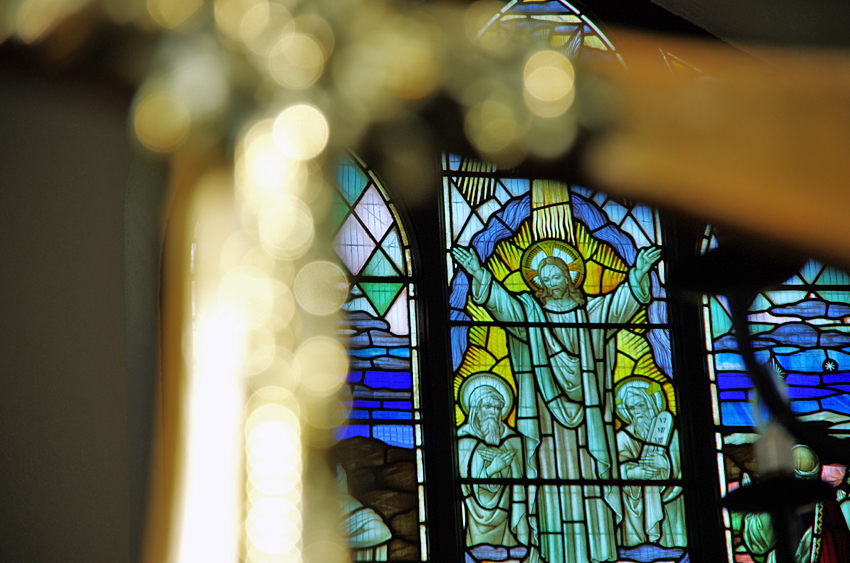 |
 [Left to Right] (top)The Alter, "untenanted" cross and the stained glasses / "Tenanted" cross / Pews painted "matt black"
[Left to Right] (top)The Alter, "untenanted" cross and the stained glasses / "Tenanted" cross / Pews painted "matt black"However, he soon got annoyed by many small troubles among the people. Especially the frequent telephone ringing that interrupted his conversation bothered him so much that he needed to be alone. He would wander on Mr. Mappin's estate, Ynyshir, along the River Dovey. Wandering alone and seeing birds brought him a sence of peace and quiet. --"The swifts winnow the air./ It is pleasant at the end of the day/ To watch them. I have shut the mind/ On fools. The phone's frenzy/ Is over.' ("Swifts",Pieta)
It always made him comfortable to see birds in quietness. Especially getting sight of a rare one made him delight and waiting for it patiently was "exactly the same with the relationship between man and God that is known as prayer. Great patience is called for, because no-one knows when God will choose to reveal Himself."3
Ynyshir was a good place for it but there was a bird observatory in Bardsey Island at the tip of Lleyn Peninsula. In August 1954, just two months before having moved to this village, Thomases went there on their holidays and came to know Misses Keating, who had rescued and restored Plas-yn-Rhiw estate in Lleyn Peninsula, through a friend in Eglwys-fach who were the founder of the observatory. R.S. borrowed one of the cottages from them and often went there to see birds.
In 1959 or so, a daughter, her mother and a man named Richard Vernon moved here soon after her father's death. They met R.S. and soon got close to him. Their love has never changed. The daughter's name was Alice and later in 1997 R.S. devoted a poem at her funeral service. Her mother was a Canadian lady called Elizabeth (Betty) and married Richard in 1977. She later shared a house in Llanfairynghornwy with R.S. after Elsi's death and Richard's death in 1996.
Although this parish influenced him slowly, his theme for the poetry continued to be Manafon. His mind tended to go back to that village and Eglwys-fach hardly became his liking as a subject for his poetry. Iago Prytherch, a well-known character in his Manafon poetry, continued to labour silently on the wasted hill. Now Iago's hill became an imaginary one; "[a]dding to his experiences in Cardiganshire to those he had in north Wales, the vicar [i.e., R.S.Thomas] was able to form a unified picture of Wales itself, ...." 4
R.S. also admired Iago as the last of his kind yet he never gave a clue or a word for it and he eventually vanished. His last appearance was 'The Face' in Pieta (1966)5.
Although the contemporary Welsh nationalist movements rose in the late 50s, it was the 60s when the political situation in Wales got much worse than ever. 'English' government tyrannized Wales and tried making the Welsh language, one of key elements for Welsh identity, die out; Capel Celyn where the villagers spoke the Welsh language daily was flooded to create a reservoir. R.S. fought against this situation with his own propaganda poetry. It was also this period when his nationalist poetry got harsher than ever. However it is interesting that as his nationalist poetry got more rigorous his voice became more silent. This is in a sense a paradox.
These factors -- pressures from the villagers, stress, worse political situations and reality -- made the entire mood of poetry in this period dry and hasher.
He and his family left there and headed for Aberdaron, a destination of "his own personal pilgrimage" in 1967. In the same year Welsh Language Act passed and Welsh became the official language at last after the long prohibition on the use of it from the English king since 1536.
Ynys-hir(Long Island) was given to a Royal Society for the Protection of Birds by Mrs.Mappin after Mr. Mappin's death in 1967.
Eglwys-fach lies between Machynlleth and Aberystwyth. There are many migrations from English cities. St. Michael's church is on the A487 road. The River Dovey is famous for the kites. Ynys-hir now has a visitor center which displays rich wildlife around there. 6 kilometers from the Ynys-hir and in the mouth of Dovey, there is Ynyslas Dunes protected as a National Nature Reserve.
In his autobiographical essay called "No-One," R.S. recommend to visit Cadair Idris (a mountain), the valley between Tregaron and Porthydfendigaid, and Towy Valley. He also said the place between Tarn-y-bwlch and Beddgelert was the most beautiful.
The welsh word Eglwys means "church" in English and the following word, fach, "small". So Eglwys-fach means "small church."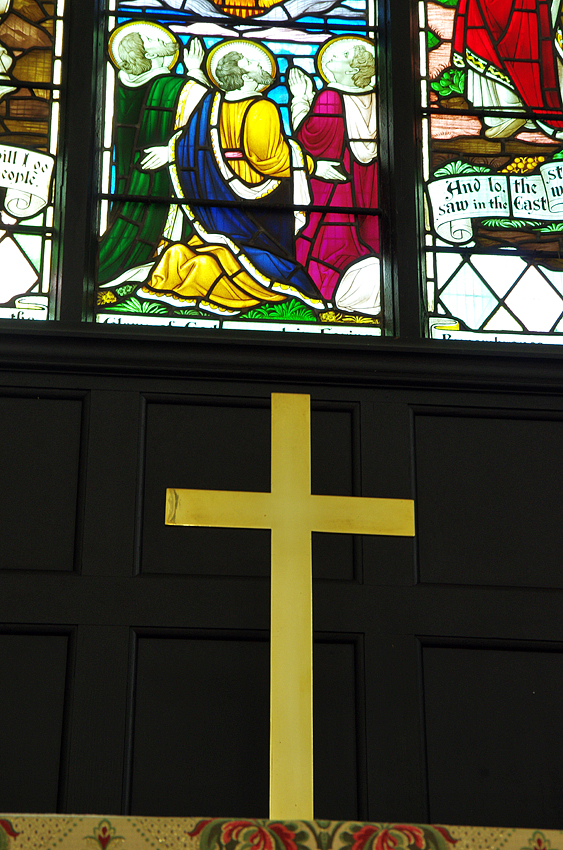
 "Untenanted" cross, 2014, (Click to Enlarge)
"Untenanted" cross, 2014, (Click to Enlarge) Aberdaron
Aberdaron